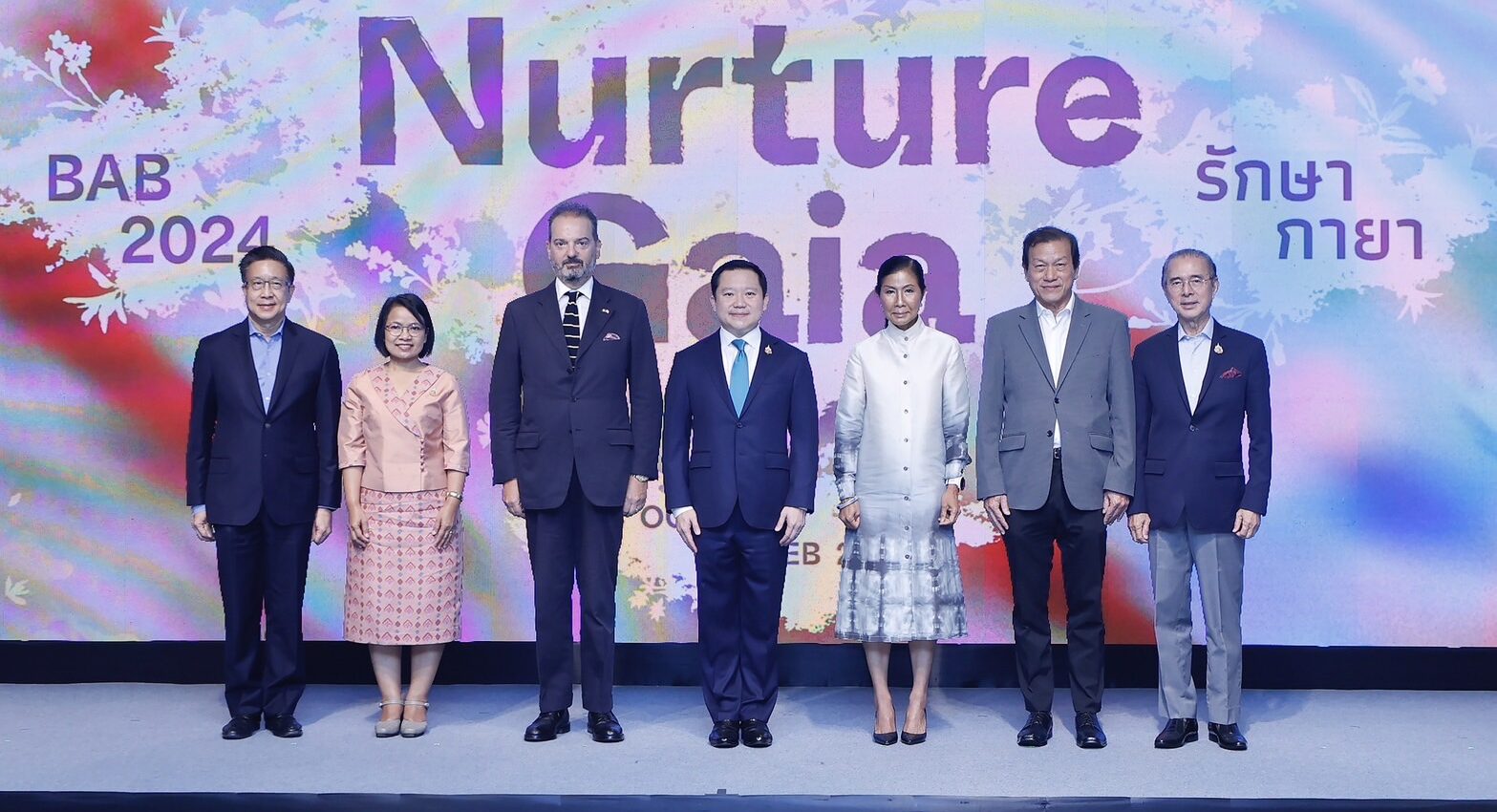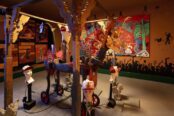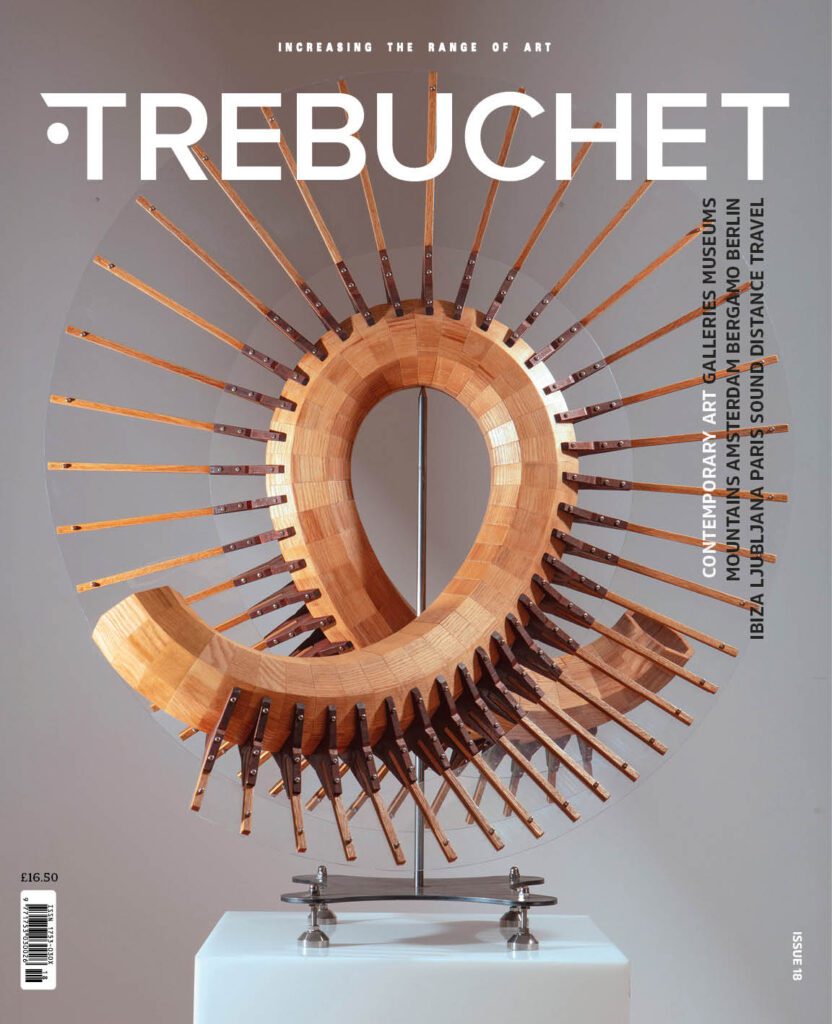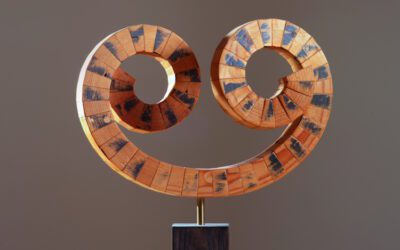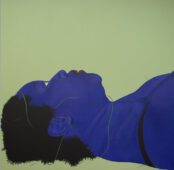Opening on October 25th, this year’s Bangkok Art Biennale has an impressive lineup of artists hailing from 28 countries, showing many works that have never been exhibited before.
This year the artists include Adel Abdessemed (Algeria / France), Haritorn Akarapat (Thailand), Agnes Arellano (The Philippines), Aideen Barry (Ireland), Ari Bayuaji (Indonesia / Canada), Joseph Beuys (Germany), George Bolster (Ireland / USA), Louise Bourgeois (France / USA), Jennie Bringaker (Norway), Dante Buu (Montenegro / Germany), Chiara Camoni (Italy) as well as many leading Thai and regional artists. The Biennale, led by artistic director Dr Apinan Poshyananda (formerly permanent secretary of Thailand’s Ministry of Culture) is set for great things.Trebuchet caught up with him to find out more.
What first attracted you to art?
My interest in art started quite early, because I was sent to boarding school in the UK. It’s unlike Thai education, where the children tend to be encouraged to do studies in mathematics, engineering, commerce, all the areas that are totally opposite to what we now call art or design or creative works. Being in England, you’re allowed to choose your subjects, and because I disliked mathematics so much, I tried to do art, and that’s how I became interested in art. I then went to university in Edinburgh to do a fine art course, hoping to become an artist.

What is your vision for the Bangkok Biennale?
We began to plan for the Bangkok art Biennale in 2017 when the CEO of ThaiBev, Mr Thapana Sirivadhanabhakdi, had this vision of making Bangkok one of the International Art destinations, but in such a way that it’s not necessarily just contemporary art; he wanted to mix it with heritage. Projecting both the contemporary and traditional. We began to plan in such a way that the Bangkok Biennale would not be just like any other Biennale. We wanted to make it different in terms of the use of venues. We have these river routes and city routes. On the river routes, we showed in temples. Not just ordinary temples, but royal temples, like Wat Pho, Wat Arun and Wat Prayoon.
So we asked the artists to work whereby they had to learn about the history and of the size of the temples. Artists have to work in a very site-specific area and have to overcome many, many barriers and obstacles, especially in terms of the acceptance of the abbots, who were very used to traditional art. In this way, the artists also had to come to terms with working with the environment, the people, the groups. The end result in the first edition, in 2018, came out that the people really, really loved it. And, you know, they enjoyed both visiting the temples as well as looking at the artworks in that context.
We also wanted to invite not only established artists, but also give opportunities to emerging artists, not just Thai, but Cambodian, Vietnamese, Laotian artists, to make it a platform for them too.
What are the challenges particular to the Bangkok Biennale?
One significant challenge is managing multiple venues and installing artwork in diverse locations. Besides galleries, mixed-use developments, and contemporary spaces, the Bangkok Art Biennale (BAB) exhibits at historical sites, such as museums and temples, each with its own unique considerations. For instance, during BAB 2022, Antony Gormley’s sculptures were installed at The Temple of the Reclining Buddha (Wat Pho). The curatorial team and the artist selected two sculptures, and we had to dig holes in the ground to install them. Given the temple’s age, we had to be extremely careful removing the flagstones. Surprisingly, while digging, we discovered an even older layer of flagstones beneath. This unexpected find allowed us to delve deeper into Wat Pho’s history.
Another challenge is dealing with Thailand’s climate and humidity, which can affect artworks. For example, when we exhibited Robert Mapplethorpe’s photographs and Jake and Dinos Chapman’s miniature statues at the Queen Sirikit National Convention Center during BAB 2022, the high temperature and humidity posed risks to the pieces. To protect them we constructed controlled rooms within the exhibition space equipped with air conditioning and dehumidifiers. These details might go unnoticed by the audience but they are crucial in preserving the artworks.
Can you talk us through the thought process for choosing the venues this year?
Since the first edition of BAB in 2018, we have divided the venues into two routes: the City Route and the River Route.
The City Route typically includes galleries, mixed-use developments, and even shopping malls, while the River Route features temples and museums along the Chao Phraya River. This division helps the audience plan their visits more efficiently. Many venues return to partner with us, such as the temples, Museum Siam, Bangkok Art and Culture Centre (BACC), and the Queen Sirikit National Convention Center (QSNCC). We are grateful for the continued collaboration with these partners.
New venues for BAB 2024 include the National Museum Bangkok, Siwamokhaphiman Hall, and the National Gallery of Thailand, which house historical relics and heritage pieces. We believe it will be intriguing to showcase contemporary art alongside these ancient artefacts.
Did the Temples add a level of constraint to the kind of art that could be shown?
We approach the use of temples with profound respect for their cultural and religious significance. This respect naturally influences our selection of artworks for these sacred spaces. Rather than seeing this as a constraint, we view it as an opportunity to thoughtfully curate contemporary art pieces that harmonise and complement the spiritual and historical context, creating a meaningful dialogue between contemporary art and ancient tradition. This year, we selected several video and installation pieces for display at the temples, each complementing the surrounding historical Buddhist environment.
How do you see the art scene in Thailand progressing? Is there a particular Thai flavour to the art produced that you could point us to?
Well, I think the emerging Thai artists have a lot of opportunities to show their skill and their works, and it’s so surprising that in Bangkok there are so many activities in art galleries, and openings going on. What we lack is the sort of promotion, the publicity to tell the people who come to Bangkok, or even, to residents of other cities in Thailand, of what is going on. This is what we lack.
The talent is there, and it’s brimming, brimming with talent. Whether it be video art or paintings, or the characteristics that appear in their work, or the very experimental filmmaking. There’s a rich variety of mediums that the artists are using, I think, and the younger artists have this ability to mix mediums together or even experiment in AI or maintain reality.
So the flavour of Thai contemporary art is not one specific medium, like painting or sculpture, but this richness, the eclectic way of presentation. I think the artists are getting the hang of it, the younger artists are promoting themselves better. They’re speaking English, they have the portfolios, you know. The presentation, I think, is more proficient than the older generation. So when foreign curators and gallerists take interest in Thailand and the contemporary art scene, the Thai artists can meet and speak, have conversations with these people, much better than before.
How does the Biennale approach internationalism? Galleries and artists from other countries / continents?
BAB is dedicated to ensuring a diverse and global representation of artists. This starts with the curatorial team, which includes curators from different parts of the world — this year from Thailand, Japan, and Ireland — bringing varied perspectives and networks to ensure a more inclusive selection of artists. Each edition features artists from up to 39 countries, both emerging and established, creating a platform that celebrates global artistic exchange. Additionally, the theme “Nurture Gaia” resonates globally, addressing universal issues and encouraging cross-cultural dialogue. Named after Gaia, a personification of Mother Earth, the theme explores topics such as nature, nurture, femininity, ecopolitics, animism, and the supernatural. Gaia hypothesis proposes that the Earth is a living being that sustains life, whereby it is being destroyed by climate change, pandemics, war and environmental problems caused by humans.
With a strong traditional culture of art, how do new artists sit alongside them?
We carefully curate our exhibition to create a dialogue between traditional and contemporary artworks. For example, displaying modern pieces at historical places, temples, and museums creates a juxtaposition that allows visitors to see how modern artists draw inspiration from traditional themes, techniques, and motifs while also challenging and expanding these conventions. BAB also hosts the BAB Academy and other educational programs, which highlight the connections between traditional and contemporary art. These initiatives help audiences understand and appreciate the influences and innovations that shape current artistic practices. Finally, by representing a diverse range of artistic voices and featuring artists from various backgrounds, we create a comprehensive narrative that honours tradition while celebrating innovation.
People talk about a boom in art from Asia. Do you have any thoughts on what’s causing this? Or is that European galleries and collectors are just catching up?
I think it’s like they come in cycles, you know. 20 years ago, they were talking about the emerging tigers, you know, the five tigers, the rise of China, the millennium, the Golden Age, the Golden Dragon. We know about the economy and politics. Of course, the economy especially has a lot of impact on culture and art. When China rose at the beginning of the millennium, people thought they were going to surging ahead and along with the extravagance and the richness of China. We thought that, you know, other Asian countries, especially Japan, Korea, Taiwan, even Hong Kong, even Singapore, will have this ripple effect. And the artists, or the countries in Southeast Asia would also move along. And that came, you know, that came with, with the sort of economic boom in those days, and then there was Covid and all these troubles, whether it be wars or problems in terms of competition, not necessarily in the West, but also in the Middle East. So the effects have also been somewhat affected, especially after Covid, when it is now becoming like, like a dream, an unrealized dream, because there are problems everywhere. In that way, the Asian art boom, I think it was like this mirage. It’s catching up right now, I think maybe the boom is like a birth, more like a rebirth.
Can you name some of the exciting Thai artists to watch?
Kawita Vatanajyankur, who exhibited at previous Bangkok Art Biennale editions in 2018 and 2022, and currently at The Spirits of Maritime Crossing at the 60th International Art Exhibition – La Biennale di Venezia. Her work examines the interplay between human manual labour and machinery. Sanitas Pradittasnee, from BAB 2018, creates large-scale installations and sculptures that emphasise natural changes over man-made architecture. Nakrob Moonmanas, who presented at BAB 2022 and The Spirits of Maritime Crossing, draws inspiration from historical events, creating collages and video works, sometimes using AI to create parts of the world. Jakkai Siributr, known for his textile and embroidery works created in collaboration with local communities, giving voice to refugees. Taiki Sakpisit, showcasing at the upcoming edition of BAB 2024, uses cinema to explore Thailand’s troubled past, embedding a strong political commitment in his films.
Is the digital nomad (expat workers from abroad moving to Thailand) culture affecting the art scene in Thailand?
Digital nomads bring diverse cultural backgrounds and artistic sensibilities, enriching the local art scene with different perspectives. Their presence fosters creativity and innovation through the fusion of international and local influences. They contribute to a more cosmopolitan audience for art exhibitions and events, helping to broaden the reach of local artists to an international audience.
What does the future hold for the Bangkok Biennale?
Well the foundation of the Bangkok Biennale, first of all, the sponsors ThaiBev offered us three editions and when we finished in 2022 they kindly extended this to three more editions. So it’s going to be 2024, 26 and 28 so in terms of stability, the foundation, the Biennale is quite solid. Now we can plan ahead, and we can do it in such a way that the sequence of each biennale leads on to the other. Last time we had artists from Africa, from South Africa. This time, we’re focusing more on artists within our region. Now, we’re planning to have outreach to artists from Russia and South America.
Previously, we had artists from Mongolia, this sort of offering where we give opportunities for artists from very far away to come and be in Bangkok. The exchange of cultures and the exchange of people, I think, can be very enriching. At the same time, with the Venice Biennale, which we exhibited at this year, we also plan to go next year. We want to create this continuation whereby the artists who participate in the Bangkok Biennale can also extend their adventure to the grandest and oldest Biennale in the world.
At the same time, we want to make connections with the Thai community in Europe, especially in Italy. So we meet the Thai people living not just in Venice, but in Verona, in Padova, in Vicenza, they come and exchange ideas through art activities. People-to-people contact, where art becomes the catalyst.
Showing at Venice Biennale is for eight months, so it’s a long period of time, which will overlap the Bangkok Art Biennale. Our future would be that, if we continue this equation, we will continuously have art activities every year, not every two years, expanding and extending towards other countries as well as Bangkok.
As part of Trebuchet’s profile series, we’ve teamed up with artists to create unique portraits of leading artistic figures. Here Bubba2000 has created a portrait of Dr Apinan Poshyananda.

Trebuchet Asia Editor
An artist, gallerist and educator Syrett travels the world discovering new generations of artistic talent and creative visionaries.

